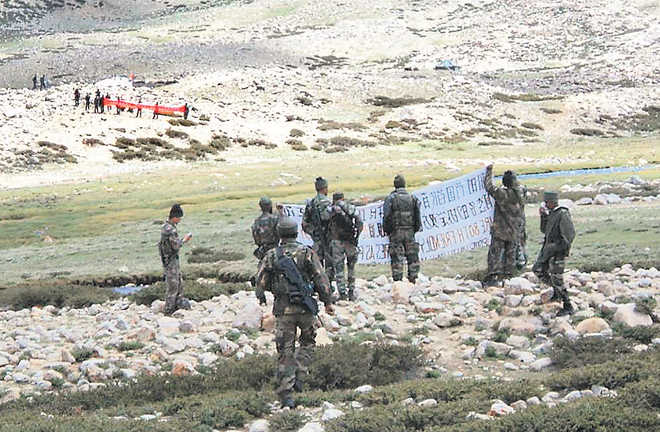NEW DELHI: As India and China are locked in a tense military posture at three separate points along the Line of Actual Control (LAC) in Eastern Ladakh, the efficacy of the border agreements and protocols is under question.
China is honouring none of agreements inked since 1993, probably trying to carve a ‘new normal’, attempting to alter the existing arrangements.
The series of protocols ensured that the two sides knew which were disputed sections of the LAC and decided upon conduct of troops in disputed areas. The 3,488-km LAC running all along the Himalayan ridgeline in un-demarcated and has several points which are disputed. The perception of where the LAC runs varies by several km at certain places and troops of either side patrol in these disputed sections.
Non-disputed areas were a strict no-go and in the present case what China is doing at Galwan in Eastern Ladakh is a situation that has not arisen since November 1962 – when the India-China war ended. At Galwan, China is sitting some 3-4 km inside Indian claim line of the LAC and its perception is not disputed by either side.
At the north bank of Pangong Tso a 135 km glacial melt lake, troops have clashed, two flag meetings yielded nothing. China wants to keep India at least 8-10 km short of the present patrolling line.
Since 1993 the timeline, incidentally, coincides with the economic rise of the India and China the two countries have had a few key agreements aimed at ensuring peace along the LAC. There have been a series of agreements which dictate the conduct of soldiers and also how a high-powered committee with members of both sides will sort out matters.
In January 2012, the two countries inked an agreement and established a ‘Working Mechanism for Consultation and Coordination on India-China Border Affairs’. It is tasked too “address issues and situations that may arise in the border areas that affect the maintenance of peace and tranquillity”.
So far, China has been ‘threatening’ India through the news outlets owned by the Communist Party of China.
Incidents at Galwan and Pangong Tso fly in the face of the 2005-inked “protocol on modalities for implementation of confidence building measures in the military field along the LAC in the India-China border areas”. The mandate of the agreement is: “Neither side shall use force or threaten to use force against the other.” It also calls upon both sides to stop their activities (like patrols) in the disputed area and not advance any further. On coming face-to-face troops unfurl a banner at each other asking to back off the present positions of patrolling.
There are some 400-500 such banner drills done annually and in this case the system has not worked.
The Border Defence Cooperation Agreement (BDCA) inked in 2013 says both sides have to inform about military exercise and over-flying aircraft. The two sides agreed that they shall not follow or tail patrols of the other side in areas where there is no common understanding of the LAC. At present, China is flying helicopters very close to LAC, India responded by flying out a team of Sukhoi30 MKI jets and patrols parties have jostled, fought and thrown fisticuffs at each other.
The two countries have five meetings points along the boundary where military commanders meet. These at DBO and Spanngur gap in eastern Ladakh. Meetings have yielded nothing, so far.


